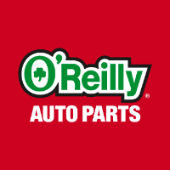-
Welcome to Auto Parts Forum
Whether you are a veteran automotive parts guru or just someone looking for some quick auto parts advice, register today and start a new topic in our forum. Registration is free and you can even sign up with social network platforms such as Facebook, X, and LinkedIn.
Common Causes of Oil Leaks
-
Similar Topics
-
By OReilly Auto Parts
SPRINGFIELD, Mo., March 13, 2025 (GLOBE NEWSWIRE) -- O’Reilly Automotive, Inc. (the “Company” or “O’Reilly”) (Nasdaq: ORLY), a leading retailer in the automotive aftermarket industry, today announced that its Board of Directors (the “Board”) approved a 15-for-1 split of its common stock, to be effected in the form of a one-time special stock dividend.
link hidden, please login to view -
By Counterman
Purolator announced the launch of its 20K Premium Oil Filter. Designed for high-performance driving conditions, the 20K Premium Oil Filter provides superior engine protection for up to 20,000 miles and is geared toward drivers who demand reliability and durability alongside affordability, Purolator said.
A news release announcing the product explained that the
link hidden, please login to view is engineered with high-density, synthetic blend media that captures more than 99% of dirt and contaminants. Purolator added that it is optimized for vehicles that experience frequent towing, off-roading, and stop-and-go traffic. Additional features include a silicone anti-drainback valve to prevent dry starts, a PuroSEAL gasket for superior leak protection, and a PuroSTEEL casing that withstands extreme pressure. “We are thrilled to introduce the Purolator 20K Premium Oil Filter exclusively at Walmart,” said Daryl Benton, vice president of sales and marketing for the automotive aftermarket with MANN+HUMMEL. “The Purolator 20K represents the next level of filtration technology, delivering long-lasting performance and durability for today’s most demanding drivers.”
Customers can find the Purolator 20K Premium Oil Filter exclusively on Walmart.com, or in select Walmart stores nationwide.
A Dynamic Kickoff
The Purolator 20K Premium Oil Filter was officially unveiled at Purolator’s state-of-the-art manufacturing facility in Fayetteville, North Carolina. Attendees, including automotive media, influencers and industry professionals, witnessed firsthand how the Purolator 20K Premium Oil Filter (and all Purolator filters) is tested and manufactured to the highest standards,
link hidden, please login to view said. Interactive experiences allowed guests to explore the technology behind the Purolator 20K. Education and perspective came in the form of a panel discussion and production tour led by industry experts who played crucial roles in developing and bringing to market the Purolator 20K. Subject matter experts included Purolator’s lead product engineer and Walmart automotive merchants. “Purolator’s commitment to innovation and quality aligns perfectly with Walmart’s mission to provide customers with great products at an incredible value,” said Scott Bayles, vice president of merchandise – automotive, Walmart US. “The Purolator 20K Premium Oil Filter is a game-changer for drivers looking for long-lasting performance, and we’re proud to offer it only at Walmart.”
Purolator added that the Purolator 20K and Purolator air filtration will be used on more than 1,000 horsepower Formula Drift cars driven by Odi Bakchis, Dan Burkett, Rome Charpentier and Ryan Tureck for the 2025 season. Those drivers also attended the launch event and challenged guests to a special drift driving experience.
The post
link hidden, please login to view appeared first on link hidden, please login to view.
link hidden, please login to view -
By Counterman
Lucas Oil has announced the latest addition to its vehicle performance product lineup: Lucas Emissions Clear. The company said this fuel and exhaust system cleaner addresses the need for effective solutions to reduce vehicle emissions and improve catalytic converter performance, helping vehicle owners meet strict emissions regulations.
In a news release announcing the product, the company explained that Lucas Emissions Clear Fuel and Exhaust System Cleaner targets the entire fuel delivery system, removing harmful deposits that contribute to excessive exhaust emissions. By reducing particulate matter before it reaches the catalytic converter, the product helps extend its lifespan, optimizes combustion and improves emissions catalyst effectiveness. Formulated for easy integration into routine vehicle maintenance or pre-emissions testing, Lucas Emissions Clear is a one-tank treatment that provides emissions control, promotes cleaner air quality and is compatible with any gasoline engine, the company said.
“A cleaner engine means a more efficient, more reliable car, and Lucas Emissions Clear delivers exactly that for drivers,” said
link hidden, please login to view CEO Morgan Lucas. “We take pride in helping our customers save money on repairs and maintenance. Cleaner emissions not only contribute to a healthier environment, but also extend the lifespan of exhaust systems, providing long-term financial benefits for drivers and helping to meet more stringent regulations. With this product, we are making it easier and more affordable to maintain optimal performance and compliance with emissions standards.” Designed for environmentally conscious vehicle owners, fleet managers, automotive enthusiasts and drivers seeking improved fuel efficiency and performance, Lucas Oil said its Emissions Clear can cut harmful pollutants by up to 90% while delivering up to 5% improvement in fuel economy.
The post
link hidden, please login to view appeared first on link hidden, please login to view.
link hidden, please login to view -




Recommended Posts
Join the conversation
You can post now and register later. If you have an account, sign in now to post with your account.
Note: Your post will require moderator approval before it will be visible.